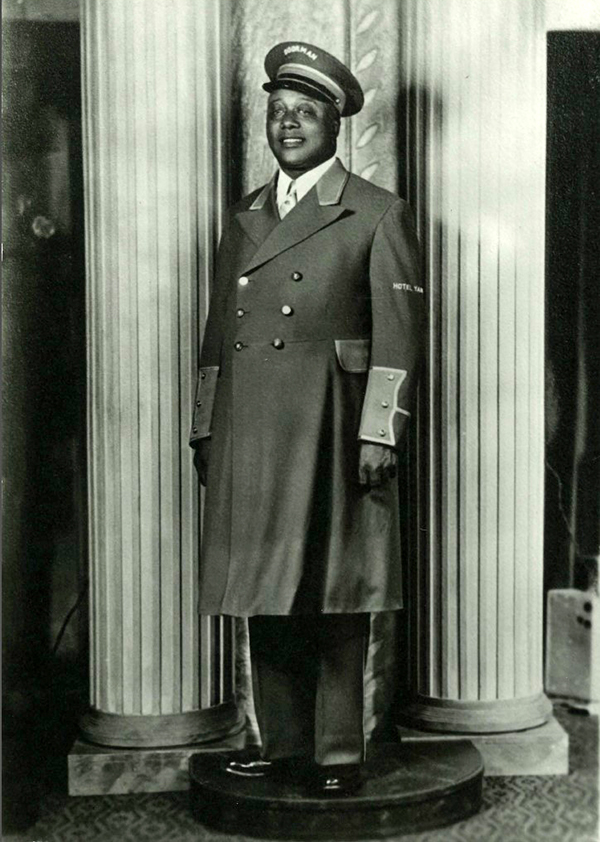During the month of February, History Nebraska highlighted articles and blog posts that pertained to Black History Month and the state of Nebraska. Some of them were written recently, some were written a few years ago. This is a general overview of those posts.
This Historical Marker recognizes the Buffalo Soldiers. This was the first regular regiment of black soldiers established by Congress after the Civil War. The entire marker text can be read in this LINK.

This was initially a one-part story about a Black doorman at Grand Island’s Hotel Yancy. It was an example of African Americans making the most of an unjust situation. Click HERE for the story.
Shortly after we published part one, the Plainsman Museum & Hamilton County Historical Society contacted us with more information on the doorman featured in our story. Who is he? His name is William Thornton Patrick. Everybody knew him and he knew everybody. We knew part two needed to be written. That can be read HERE.
One of the very first enslaved people brought to Nebraska was Eliza Grayson. This was in the mid-1800s and running away was a huge gamble, but that’s what Eliza did. Read about it HERE.
This is one of the most popular issues we’ve published at History Nebraska and we’ve made it available for free download. “African Americans in Nebraska history: A Special Double Issue” can be found in this LINK.

There are many people that strove for equality throughout history. Many of them we’ve never heard of, but their names are still important. Rev. Russel Taylor is one of those names. Read about him HERE.
Shortly after the George Floyd protests last year, we put together a sketch of the deep roots of present-day injustices, as we understood them. THIS is that article.

By the end of the Civil War, black volunteers made up about 10 percent of the Union’s manpower, had fought all over the country, and had suffered 36,837 deaths. The Buffalo Soldiers were headquartered at Fort Robinson, Nebraska from 1887 to 1898. Read about them HERE.
Nebraska’s longest-lasting African American rural settlement received a state historical marker thanks to a coalition of descendants, the Cherry County Historical Society, and author Stew Magnuson (The Last American Highway). Read about DeWitty HERE.
In a period of intense racial discrimination, Nebraska branches of the NAACP formed in the early 1900s in Lincoln and Omaha to provide support and a voice for African Americans. In its early history, there were many triumphs and many setbacks. Read more about their triumphs and struggles HERE.
Emancipation Day was Sept 22, 1862 and came to symbolize Black hopes for equality and justice. Many celebrations were organized to celebrate Emancipation Day in several Nebraska communities. Some included brass band concerts, dances and even an ox roast!
Click HERE to read about what other celebrations were held!
A letter by D.H. Kelsey, from Plattsmouth but living in DC when the 13th Amendment was ratified, showed optimism for civil rights. However, future generations were left to struggle for what Kelsey thought his generation had already won. Read the letter HERE.
If you read just one thing about the roots of civil unrest in Nebraska, make it THIS. Ashley Howard’s award-winning Nebraska History article about the 1960s uprisings.
In 1929, there was a racial incident in North Platte. 50 years later, History Nebraska wrote an article about it. Another 40 years later, we were called out on it on Twitter (X). HERE is a fascinating look at how the passage of time has a way at revealing blind spots.
Many prominent musicians came to Omaha to play in the early 1900s. We can thank civil rights activist and jazz orchestra band leader Dan Desdunes for this! Read more about the Omaha music scene HERE.















